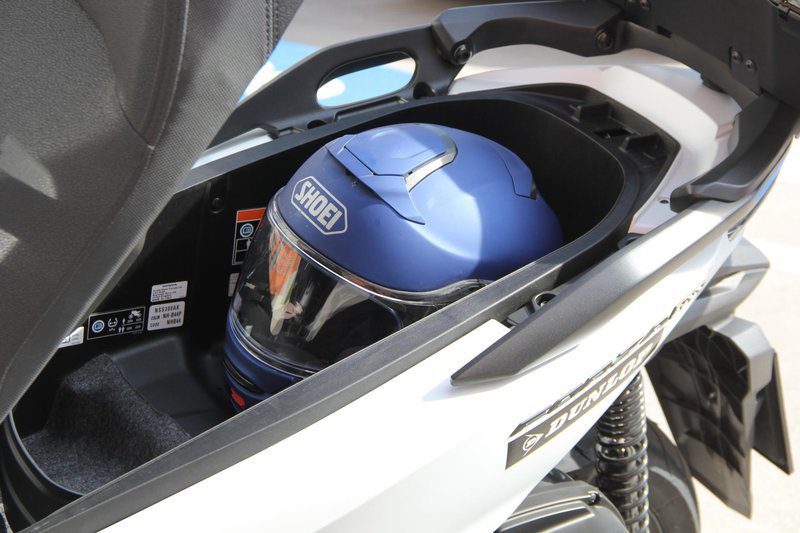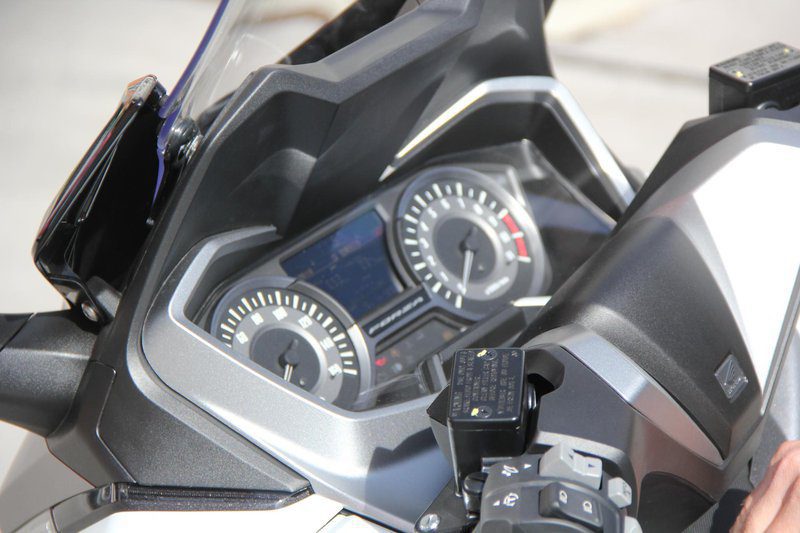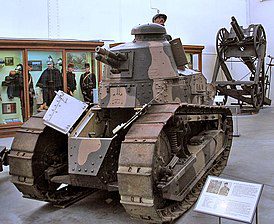
Test: Honda Honda Forza 300 (2018) // Test: Honda Forza 300 (2018)
It’s not that I’m arguing that Honda they are not bold enough. They have launched a large number of models over the past ten years to fill almost all the existing gaps between the different classes. But with the exception of two or three "niche" models, their entire fleet was created with a desire to please everyone. Of course, this strategy has many advantages, but while there is (again) enough money, there is less room for compromises.
The clever girls from Honda found out about this, so they decided that it would be a new one. Force designed for those who buy maxi scooters because they really need them, not because they are written on their skin in terms of size, comfort, practicality and finances. Every serious manufacturer of maxi scooters, including Honda, has its own development center in the homeland of scooters - Italy. There they were given clear and specific instructions - make a scooter for Europe, but you can also make a little for the USA.

With these instructions, the engineers built the new Forza almost entirely from scratch. Starting with a new tubular frame that, with its own weight and some parallel solutions, is responsible for what Forza is now what 12 pounds lighter from the predecessor. They also shorten the wheelbase and thus provide more maneuverability and, in particular, increase (by 62 mm) the seat height, thus providing a better driver position, greater visibility, spaciousness and, of course, safety. Thus, in terms of the data measured by the meter, the new Forza has been placed in an area that is currently known as the most optimal in its class. With subtle differences and a lightweight of three kilograms, the new Forza is now where its biggest competitor, the Yamaha XMax 300, is.
Slightly slower on the track (about 145 km / h), but thanks to Honda new premium variator and smart HSTC (Honda Adjustable Torque Control) very lively and responsive at low speeds. In class Scooters 300 cc The anti-skid system is not permanent, but compared to the ones we have tested so far, the Honda is the best as it performs its function with the least pronounced but still effective starting and can also be disabled.

In terms of equipment, it offers everything you need. The driver's cab is a mixture of new and already seen. The rotary center switch is new (the standard lock has said goodbye since the Forza has a smart key) and the rest of the steering wheel switches have already been seen on some slightly older but still modern Hondas. The central rotary switch takes some getting used to, so the benefits of this novelty can only be realized when all contact and control protocols are imprinted in memory. However, the first and last impressions of the driver's workplace are excellent. This is helped by the pleasant backlighting of the dashboard, the graphics of which, at least for me personally, are very reminiscent of those that are not even on the latest Bavarian cars. There is nothing wrong with this, since, as already said, it is beautiful and, above all, well transparent.
I write with a clear conscience that the Forza is one of those Hondas that, in addition to its notorious reliability and quality, also impresses with its superb workmanship. Honda's shift from global to more local has resulted in a great mid-range GT scooter at a good price.
Basic data
Sales: Motocentr As Domžale
Base model price: 5.890 €
Test model cost: 6.190 €
Technical information
engine: 279 cm3, single cylinder, water-cooled
Power: 18,5 kW (25 hp) at 7.000 rpm
Torque: 27,2 Nm at 5.750 rpm
Energy transfer: stepless, variomat, belt
Frame: steel tube frame
brakes: front disc 256mm, rear disc 240mm, ABS + HSTC
Suspension: classic telescopic fork at the front, double shock absorber at the rear, adjustable preload
Tires: before 120/70 R15, rear 140/70 R14
Growth: 780 mm
Weight: 182 kg (ready to ride)
We praise and reproach
back cover connected to smart key
efficiency, price, fuel consumption on the test is below 4 liters
spaciousness, electric windshield displacement
driving performance, traction control
appearance, workmanship
restless steering wheel when lowering for a moment
rear brake - ABS too fast
the windshield could have been larger
final grade
Forzo was developed by those who apparently also use scooters on a daily basis. They have also taken a big step forward in ergonomics. Under the two-level seat there is room for two helmets and a bunch of little things (volume 53 liters), and a spacious (45 liters) also an original rear suitcase that fits into the design lines of the entire scooter.
